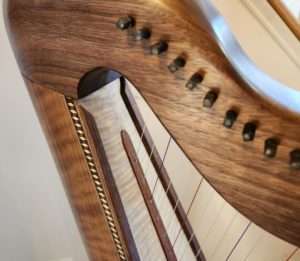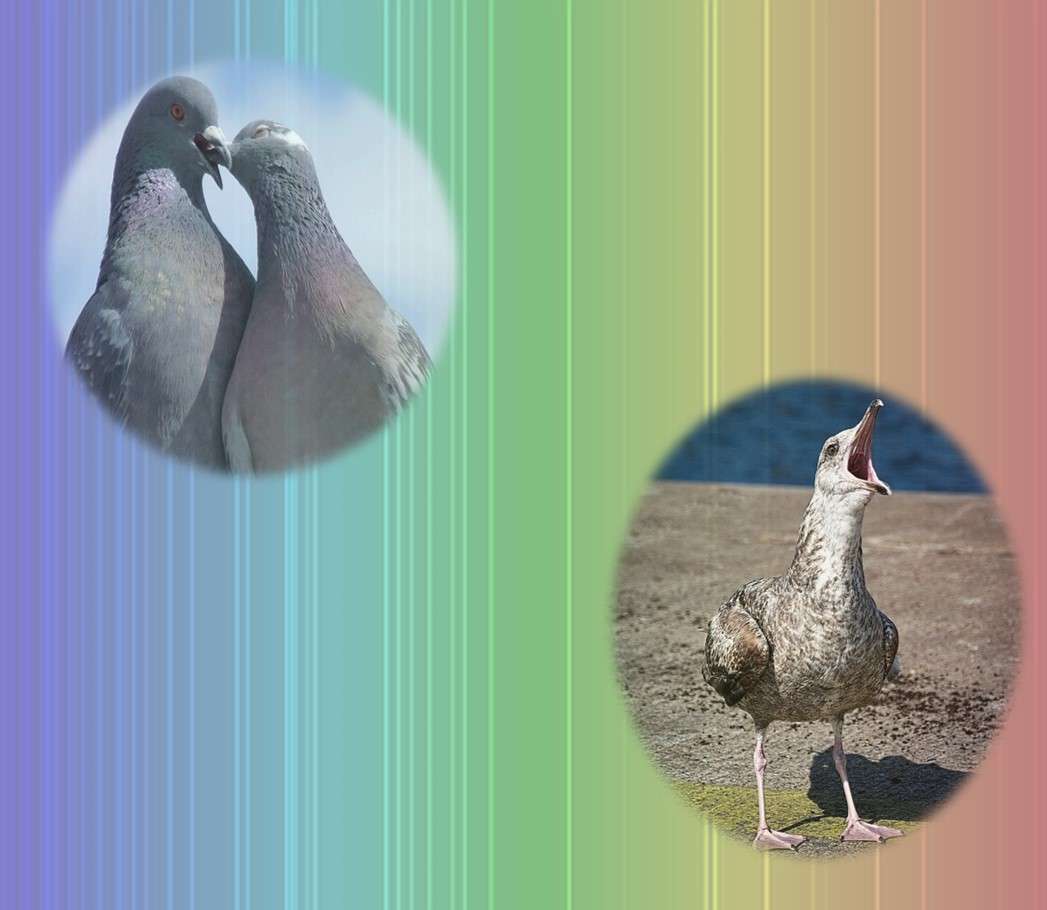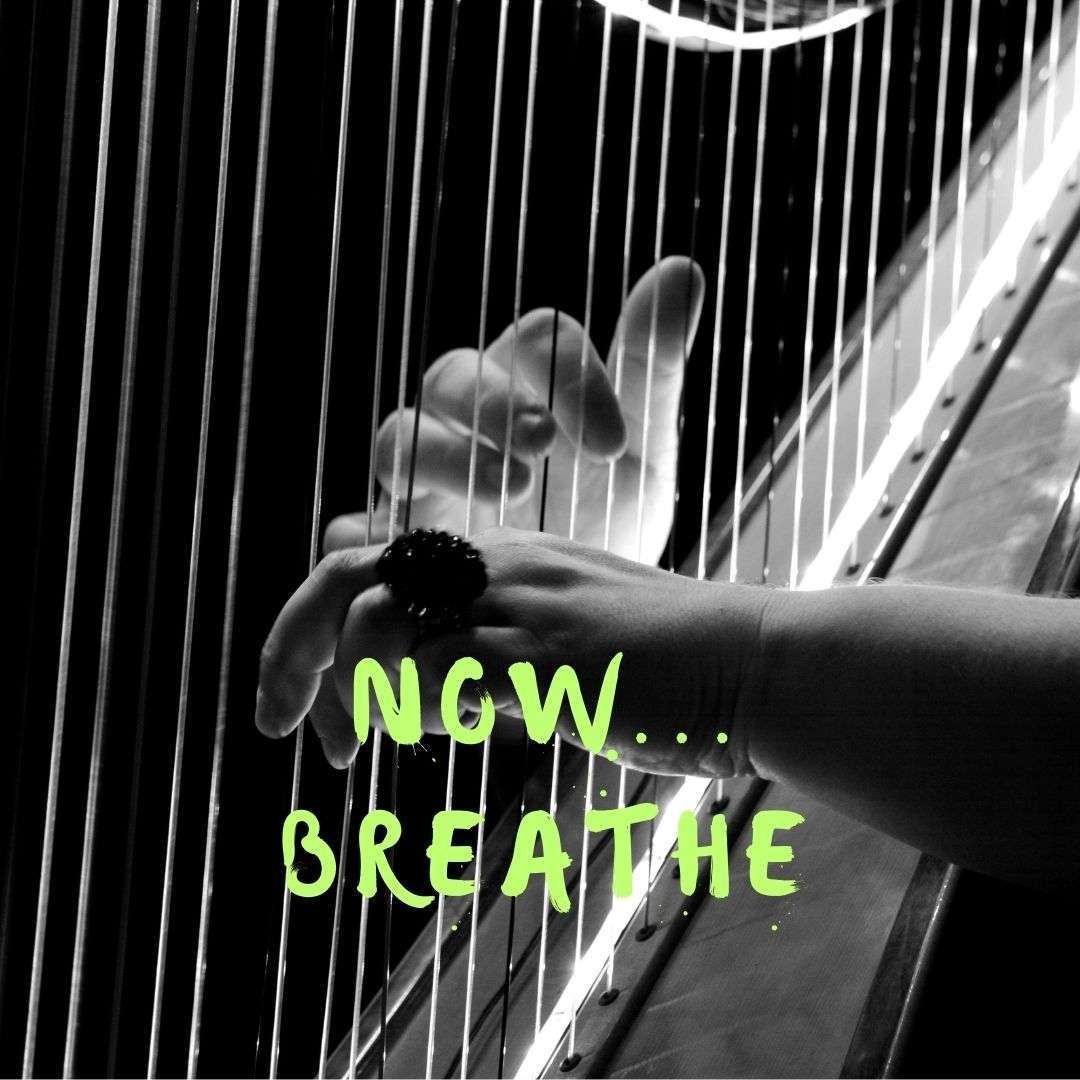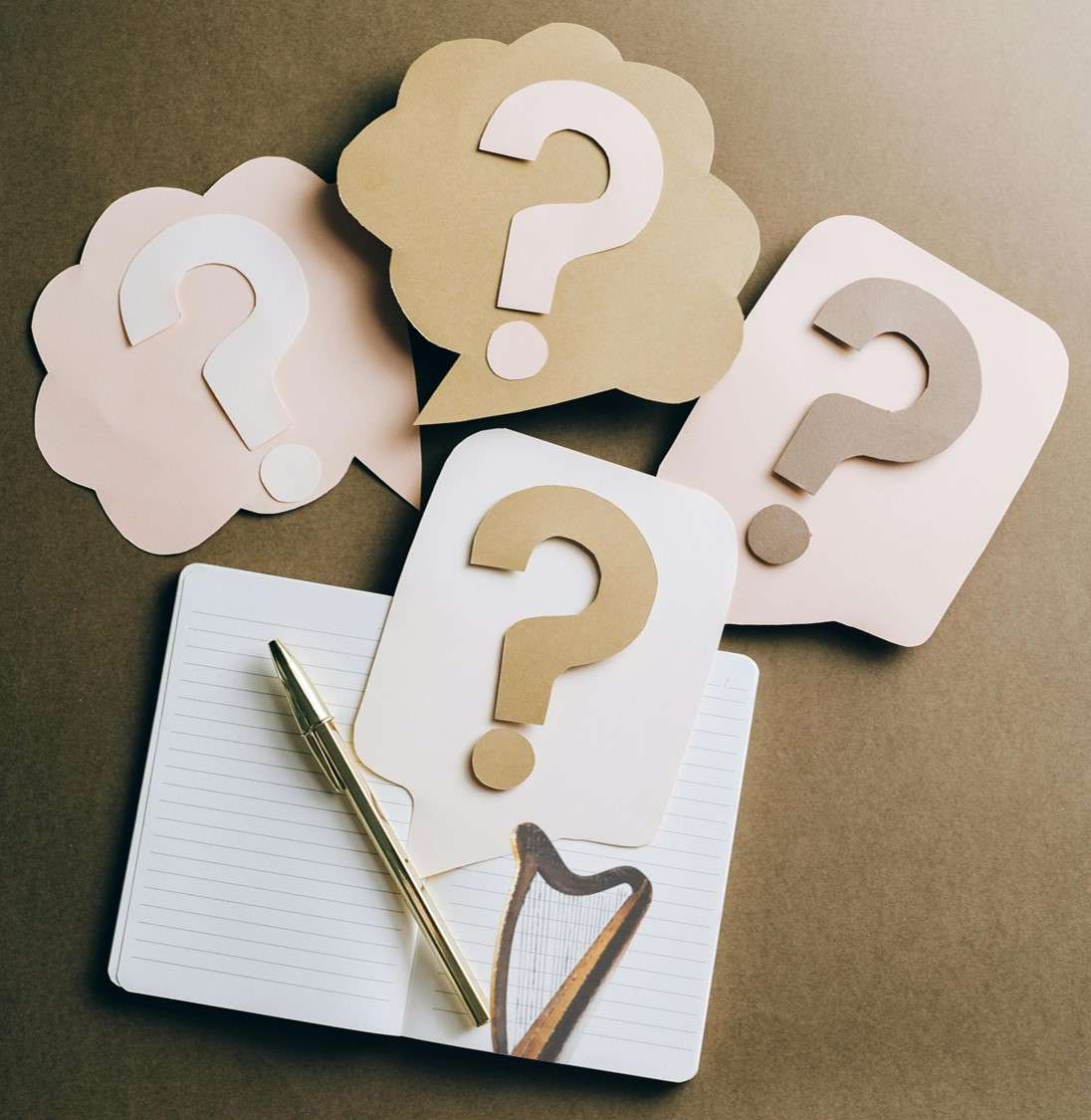PSST – did you hear the latest?
Hot off the presses! There’s a new harp in town!
If you have been reading any length of time, you know that I hold my local luthier, Rick Kemper of Sligo Harps, in the greatest esteem. He builds amazing harps, takes impeccable care of all my harps, and teaches me something every time I talk to him (usually about harps, sometimes about curry).
The cool thing – he has designed and built a new harp design. The even cooler thing – you’re the first to read about it as he dished on the new design exclusively with us! He graciously let me play one with it’s rich tone and touchable finish. Yummy! Even more graciously, he let me ask him some questions. I’m happy to share our chat:
Rick, what made you decide to develop a new harp design?
It had been a decade since I had fully revisited my Nylon strung designs, and with all the things we have been learning, I decided I should apply those innovations to an updated North American style nylon strung harp.
How is it different from your other models?
We sell a lot of Luchairs which are engineered for the Irish and Scottish style of playing. Talking to customers, some want a taller harp with more tension, a more mellow sound. Many customers are wary of the high cost and frequent breakage of Fluorocarbon strings, they have been asking for an updated Sligo harp that uses reasonably priced nylon strings. I’m really happy with the result, happy enough to mothball two older nylon designs.
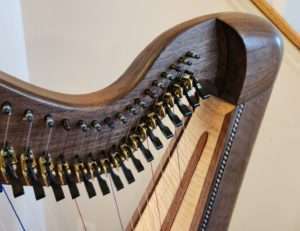 What is the “secret sauce” of it? Why should people consider this new harp?
What is the “secret sauce” of it? Why should people consider this new harp?
I like the idea of “Sligo Secret Sauce” – we really ought to trademark that! I think we excel at hand built wooden harps that are about 20-30% lighter than most others in the class, with build quality and innovations that allow us to warranty them for 10 years.
At Sligo, there is not an upcharge for round backs over square backs or staves – they are all the same price. Round backs are lighter by 2-3 lbs, they never crack and look elegant, so the majority of our customers opt for them. We also use double tapered soundboards, finesse the inner string rib, use a screwed batten trim for the sound board edge – and a dozen other build details that deliver great sound, dynamics, and longevity in Sligo harps. I do a brisk business repairing all kinds of harps, and I don’t want my customers dealing with the same structural issues 7, 10, or even 15 years later with a Sligo instrument.
What sort of people would be attracted to it? Who is this harp for?
Harp Players that are looking for a taller American style harp with a large sound. Ones that find the treble ping of Fluorocarbon strung harps too strident for their taste or want to avoid the more frequent breakage and additional cost of Fluorocarbon. Some players have trouble with the even spacing (4 inches per octave) used on the Luchair. This harp has graduated spacing, what many in the industry call “Concert Spacing”, wider at the bass end narrower at the top.
What are you calling the new model harp?
It is called the Elizabeth. Since October, I have had two brothers apprenticing at the shop once a week for a few hours – home school youth who wanted some lessons in woodworking. I had been ruminating on the parameters of a new design, and proposed they help me build a pair of harps to that end. They seized on that opportunity. When I asked who in this family of 10 was most likely to take up the harp, and they thought that was their sister Elizabeth. The provisional moniker stuck.
How much does it weigh? What are the dimensions?
In Walnut or cherry, it is 20.6 lbs, 53 inches tall, 27 inches deep. When people ask about height, they may be trying to figure if the harp will fit in their car. They may be asking because they want to know how it plays against their body. Will this harp rest on my sternum, or will the knee block be up by my ear? A better gauge for the latter is the height of the knee block off the floor. I call this the playing height, and this harp is 51 inches tall at the knee block.
What type of strings?
21 Nylon strings, 5 Nylon wound over nylon transition strings, and 8 steel core bass wires. Some players find the abrupt sound transition on Scotts/Irish style harps, from heavy monofilament to bass wires unsettling. Those 5 Nylon/Nylon wound strings make it a seamless, gradual transition.
What woods will this harp be available in?
I do a lot of harps in Walnut or Cherry. I am happy to maple, custom wood or woods with fancy figure, harpists just need to ask so we can discuss details and purchasing terms for custom work.
How much will it sell for?
$5,600 with a full set of Camac or Loveland levers, and a Cronkhite soft case.
How long will it take to get one?
I try to stay ahead of demand and have 2-3 harps available at any time. That has been harder to do lately as I have committed to complete a score of major repair jobs for clients from the mid Atlantic to Northeast. I deliver a harp in 2-3 months once a customer orders one. I’ve never thought Sligo customers should wait years and years to get their harps. I’ll bring in additional workers and put in an extra 20-30 hours a week to ensure harps are delivered in a reasonable time.
Can we participate in building one if we want to buy one (like you have with other models)?
I make four slots in my production schedule each year for apprentices to come participate in building a harp. Most applicants fall into two categories:
Some are woodworkers that want to start making their own harps. I’ve had 20 or so over the years. I’m proud to have had Kevin Harrington (Cork, Ireland) and recently Robert O’Connor (County Wexford) through this program. There are a half dozen other active builders (e.g., Tim O’Carroll) that started by building from my plans. I’m a strong believer in open-source practices and my hope is the availability of excellent harps will make for a stronger, more active harp playing community. The goal here is knowledge transfer – share what I have learned from 25 years in the business so they can hit the ground running.
If there are slots left, the second group is musicians that want to participate in the creation of their instrument. We usually write back and forth a bit to make sure our schedules work out and both parties are simpatico with the commitment before beginning their build.
When can we see it?
You can come to the shop in Maryland to try it out today. I will also be at Somerset and expect to have one to show there.
So, there you have it – the latest, newest harp from Sligo Harps! If you’re not nearby, come by to see Rick at Somerset Folk Harp Festival Exhibit Hall!*
*More on Somerset soon – hope you’re coming and participating in my workshops!


